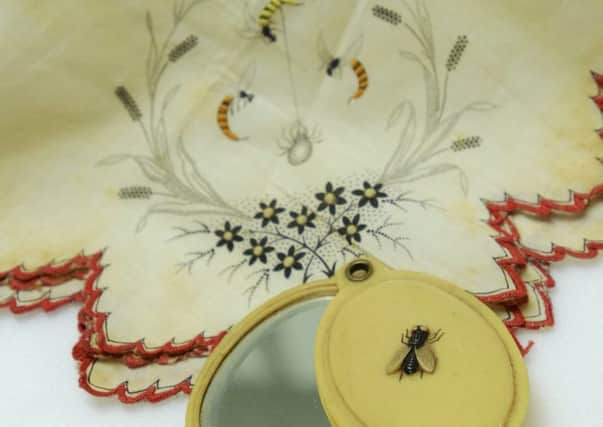Exhibit of the Week: Victorian obsession with little creatures


But flies, of course, do have their place in the great ecological scheme of things – and if ever there was a body of people determined to find it out, it was the Victorians.
The Victorians took the relatively infant natural sciences developed by their Georgian predecessors, and ran with them. And oh, how they loved their bugs. They were keen collectors, of course, with the amateur entomologists of the 19th century pinning dozens of the hapless creatures into specimen drawers – and many of these amateur collections formed the basis of collections which are scientifically hugely important today.
Advertisement
Hide AdAdvertisement
Hide AdBut they also loved them as decorative objects. We were fascinated when, on a recent episode of the much-loved BBC programme Antiques Roadshow, resident jewellery expert John Benjamin examined a pair of ruby and emerald studded gold bees and declared them to be Victorian ‘scatterbugs’ – bejewelled brooches which, as well as being worn conventionally on the lapel or bodice, might be pinned to a hat, scarf or even a parasol where, trembling slightly as the owner moved, they might just be mistaken for the real thing.
Bees, though – along with, certainly, butterflies and dragonflies, and, many would argue, certain types of beetles, moths and spiders – are naturally decorative in their own right. Many of them were used by the Victorians in their jewellery designs, a tradition that stretched into the 20th century through Art Nouveau, where the dragonfly in particular was a popular image, and into the present century with creations from fine jewellers such as Joel Arthur Rosenthal, or JAR, whose extraordinary and dazzling gem-encrusted and enamelled butterflies really do have to be seen to be believed.
But common or garden flies and wasps? The Victorians could appreciate them, too, as you can see in our two exhibits today.
The handkerchief shows a little tableau of three wasps encircling a spider, which is hanging by a gossamer thread from a wreath of leaves and grasses. It’s a slightly sinister scene – are the wasps preparing to attack? Their stingers certainly look primed…
Advertisement
Hide AdAdvertisement
Hide AdThe whole scene is printed in black ink onto white cotton, and only small areas have been embroidered over. She has satin-stitched the serpentine bodies of the wasps – two orange, one yellow; all three, obviously, with black stripes – and the yellow centres of the flowers below.
She has also decorated the scalloped edge (a little clumsily) with a very fine buttonhole stitch in red. The reverse of the handkerchief is stamped with the initials ‘S.W.’, which identifies our embroideress almost certainly as Sophy Adeline Watkin, born 1872 in Pointymoile, Monmouthshire.
Sophy married Paul Francis Lord in Scarborough in 1908, and died here in 1950; her daughter, Genevieve, donated a large collection of costume and accessories to the Scarborough Collections (not known by that name back then, of course) in 1969.
Even more sinister (to this writer’s eyes, at least) is the little ivory-backed mirror. Its construction – it slides together to form a compact oval with the mirror protected from scratches – suggests it was meant as a portable accessory to be kept in a travel bag or Victorian reticule.
Advertisement
Hide AdAdvertisement
Hide AdBut, really – how pleasant would it be to pull out your little mirror to check your hair, only to find a fat black fly sitting on top of it? A clue to its purpose may lie in a suggestion we’ve come across online that the Victorians saw the fly as a symbol of humility – so perhaps it was there as a warning shot across the bows to counteract the vanity embodied in the mirror.
The handkerchief and mirror are both part of the Scarborough Collections, the name given to all the museum objects and artwork acquired by the borough over the years, and now in the care of Scarborough Museums Trust. For further information, please contact Collections Manager Jennifer Dunne on [email protected] or 01723 384510.